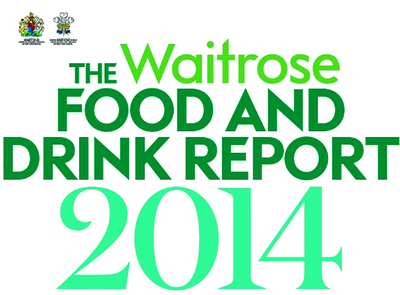The UK retail sector is changing. Tesco’s reported profits are 92% down and its share price is 50% of what it was a year ago, while Waitrose and the discount retailers power ahead. Sean Smyth looks in the crystal ball.
Mark Price, the managing director of Waitrose, commented that much of the UK supermarket sector is ’20 years out of date’. The changes are not just that promiscuous shoppers are visiting the local Aldi or Lidl, but they are moving away from the big family weekly shop, with many people buying their food on a daily basis from smaller, local stores. As Waitrose launched its annualFood and Drink Report, Mr Price was reported as saying, ‘People are buying food for now. The notion that you are going to go and push a trolley around for the week is a thing of the past. It is fundamentally changing the market. This is a once in 50 to 60 year change. The last big change was the supermarket. I think what you are seeing now is as fundamental.’
The shift in behaviour is characterised by time-poor consumers buying food on the go and for the evening ahead only. The radical changes in the market have combined with price deflation to push sales down sharply for traditional supermarkets. The latest industry sales data from Kantar show Tesco sales fell by 3.7% in the 12 weeks to October 12, with Sainsbury’s declining by 3.1%.
Pressure on traditional supermarkets is not purely driven by discounters, it is changes in lifestyle that won’t go back after the deep recession and the arrival of the connected world. More people do not know what they will eat in the evening, picking up convenience packs on the way home and they are exploring new tastes, evidenced by the rise of the ‘weekend foodie’.
If these are fundamental shifts, and the evidence suggests it is not just a blip, there are implications for labels and packaging. Supply chains will come under more pressure to react to events. The Great British Bake Off is the new ‘Delia Effect’, driving sales of Baked Alaska and its ingredients, for a short time. This means retailers have to be more flexible, with more local shops and more regional variation. All good for digital printing.
Digital as enabler
As retailers change, so the demands on packaging and labels will change, and digital is well positioned to take advantage. There are significant technology changes in the pipeline and these will help take time out of the supply chain. The next generation of digital equipment will allow strategic changes, rather than economic ones. This means that the functions of packaging itself will change. We have already seen more engagement with consumers by using personalised and versioned messages, as well as the use of QR codes and augmented reality.
In the UK, there are some 1.6 million postcodes, and while having packaging versioned for each is impractical, the 11,200 individual sectors may be targeted and when such a campaign is realised, the idea of localised advertising will be realised. The concept of making packaging earn revenue, rather than being a cost, is attractive for many buyers. It is easy to see local restaurants adopting their own branded versions, but so will chains. As the logistical issues are solved, this capability will spread to retailers, particularly for the increasingly popular smaller local stores. It will be new value added applications that drive further adoption of digital presses, with converters and customers bringing their ideas to market.
The technology will be an enabler for this to happen, not an example of a digital machine looking for a market. There will be much higher performance at better cost from the next generation of presses although not the equivalent of analogue methods for long runs. Over the next few years, there will be digital presses for large format cartons, wide corrugated and flexibles and machines to print irregularly shaped rigids. Some of these will be installed at manufacturing facilities, and at packer/filler sites as they try to eliminate delays and costs in receiving printed packs and labels. There may even be packaging printers at retailers, probably in the distribution centres rather than the stores, but there is an enormous appetite for change.








